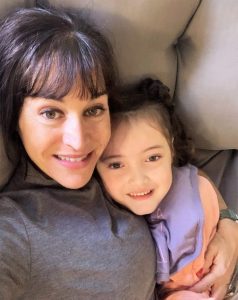Having a child with highly complex medical needs is more than a full-time job. Typically, it involves constant care and attention, every hour of every day.
This is something Natalie knows all too well. Her seven-year-old daughter Alexis has Dravet Syndrome, a rare genetic disorder which results in refractory epilepsy, cerebral palsy, global development delay and other medical complexities.
For parents, the time and organisation that goes into caring for children like Alexis can be overwhelming and isolating. Simply popping to the shops for milk or having coffee with a friend suddenly becomes a mammoth task.
“Alexis isn’t expected to have a very long life. I don’t think there is ever enough time when you know that your child has a condition that will eventually prove terminal.
“So it takes a bit of courage and a lot of organisation and these beautiful people from Hannah’s House help to give me that courage and that strength.”
Hannah’s House is dedicated to supporting children with life-limiting and complex conditions and their families, to live their best quality of life. They are a registered NDIS provider, who offer in-home respite care, play therapies and other services to support the wellbeing of the child and their families.
Hannah’s House has been helping care for Alexis since 2018.
“When we were referred to Hannah’s House, I didn’t even realise that I needed a break.” Natalie says. “I didn’t know just how hard the life we live actually was and the toll that it was taking.
“With Hannah’s House’s help, I can take off all of those other labels I wear when caring for Alexis and just be mum.”
When Alexis was two-years-old, she weighed only 8kgs and could barely ingest even pureed food.
“Between seizures, choking and refusing, it took an hour plus just to get a few mouthfuls into her,” Natalie says.
Testing showed that Alexis is a silent aspirator, meaning when she eats orally, food gets into her lungs without any outward signs of swallowing difficulty.
Alexis was diagnosed with Oropharyngeal dysphagia. Three-weeks later she had percutaneous endoscopic gastrostomy (PEG) surgery and is now fed via a feeding tube.
“Previous to her PEG going in, Alexis had constant pneumonia, collapsed lungs and unfortunately developed lung disease before we picked up what was going on,” Natalie says.
“The feeding pump means that we can slow her feeds down to a manageable level for her, without risk of vomiting or aspirating. It just gives us the ability to tailor feed to her specific needs.
While the family started with a large, bulky feeding pump, the Covidien Kangaroo Joey is now Natalie’s preferred choice for all of Alexis’s feeding. Natalie finds the smaller, lighter pump is easier to use, easier for travel and more discrete in public.
“We’ve got a lot of equipment that we have to take every time we go out so anything a little smaller saves time and space and makes things more practical in general,” Natalie says.
“It’s perfect that we can program the pump for exactly what she needs. If she’s had an awful seizure in the evening, we can put that pump on a continual feed and it will drip feed slowly through the evening for her, so that’s something that without a joey pump we couldn’t do for her.
“We don’t have to be up all night monitoring a machine, it does the work for us.”




